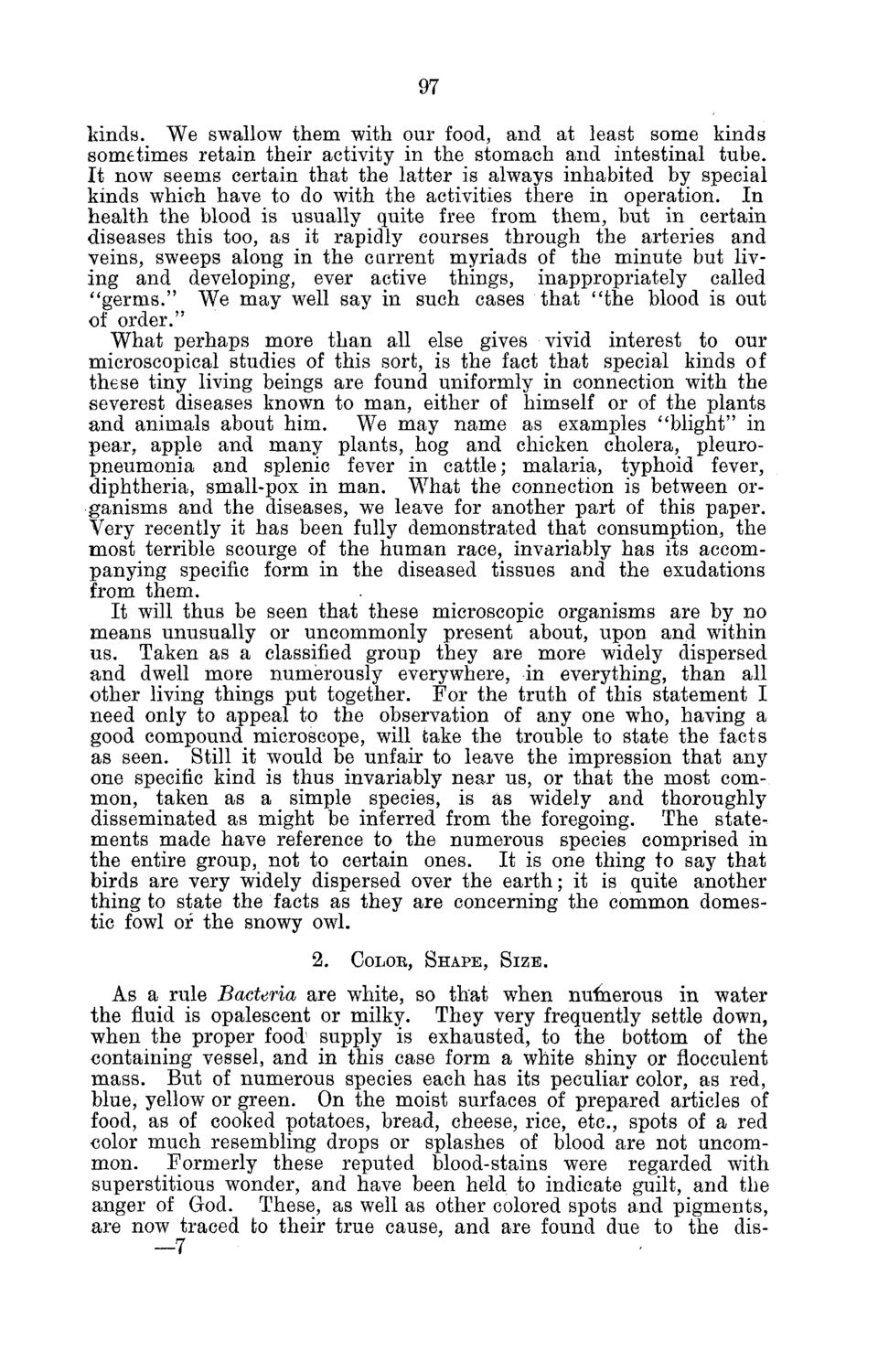| |
| |
Caption: Board of Trustees Minutes - 1882
This is a reduced-resolution page image for fast online browsing.

EXTRACTED TEXT FROM PAGE:
97 kinds. We swallow them with our food, and at least some kinds sometimes retain their activity in the stomach and intestinal tube. It now seems certain that the latter is always inhabited by special kinds which have to do with the activities there in operation. In health the blood is usually quite free from them, but in certain diseases this too, as it rapidly courses through the arteries and veins, sweeps along in the current myriads of the minute but living and developing, ever active things, inappropriately called "germs." We may well say in such cases that "the blood is out of order." What perhaps more than all else gives vivid interest to our microscopical studies of this sort, is the fact that special kinds of these tiny living beings are found uniformly in connection with the severest diseases known to man, either of himself or of the plants and animals about him. We may name as examples "blight" in pear, apple and many plants, hog and chicken cholera, pleuropneumonia and splenic fever in cattle; malaria, typhoid fever, diphtheria, small-pox in man. What the connection is between organisms and the diseases, we leave for another part of this paper. Very recently it has been fully demonstrated that consumption, the most terrible scourge of the human race, invariably has its accompanying specific form in the diseased tissues and the exudations from them. It will thus be seen that these microscopic organisms are by no means unusually or uncommonly present about, upon and within us. Taken as a classified group they are more widely dispersed and dwell more numerously everywhere, in everything, than all other living things put together. For the truth of this statement I need only to appeal to the observation of any one who, having a good compound microscope, will take the trouble to state the facts as seen. Still it would be unfair to leave the impression that any one specific kind is thus invariably near us, or that the most common, taken as a simple species, is as widely and thoroughly disseminated as might be inferred from the foregoing. The statements made have reference to the numerous species comprised in the entire group, not to certain ones. It is one thing to say that birds are very widely dispersed over the earth; it is quite another thing to state the facts as they are concerning the common domestic fowl of the snowy owl. 2. COLOR, SHAPE, SIZE. As a rule Bacteria are white, so that when numerous in water the fluid is opalescent or milky. They very frequently settle down, when the proper food supply is exhausted, to the bottom of the containing vessel, and in this case form a white shiny or flocculent mass. But of numerous species each has its peculiar color, as red, blue, yellow or green. On the moist surfaces of prepared articles of food, as of cooked potatoes, bread, cheese, rice, etc., spots of a red color much resembling drops or splashes of blood are not uncommon. Formerly these reputed blood-stains were regarded with superstitious wonder, and have been held to indicate guilt, and the anger of God. These, as well as other colored spots and pigments, are now traced fco their true cause, and are found due to the dis—7
| |